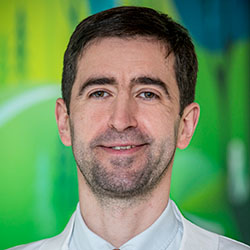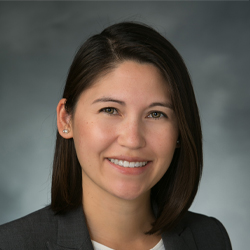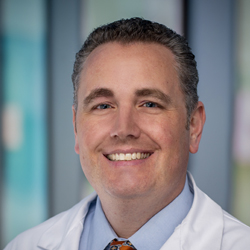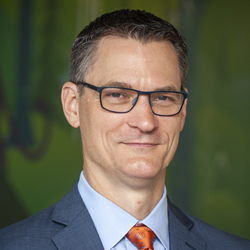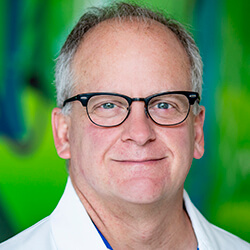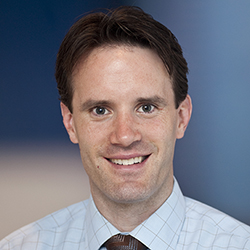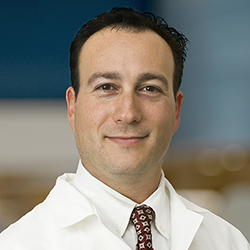Hybrid Heart Procedures
Contact Hybrid Heart Procedures
What are hybrid heart procedures?
This approach uses both heart surgery and cardiac catheterization during the same procedure. The heart (cardiac) surgeons and interventional cardiologists at Seattle Children’s work together on hybrid procedures for children with complex heart problems. Their goal is to get the best results for your child in a way that is easier on the body than open-heart surgery.
Hybrid procedures can be lifesaving for babies or children who are too sick or too small to go through open-heart surgery. We also use this method for children past infancy if it is the best way to reach the part of their heart that needs treatment.
What happens during hybrid procedures?
The cardiac surgeon makes cuts (incisions) to provide access to your child’s heart or a major blood vessel, like the aorta. Then, the surgeon and cardiologist work together to perform other steps your child needs. These may include steps like putting in a device to close a hole in the heart or placing a stent to improve flow through a blood vessel. Often, this approach means your child can get complex treatment without needing to be on a heart-lung bypass machine.
What’s special about the experience at Seattle Children’s?
-
An experienced team of pediatric experts
- Seattle Children’s is a leader in hybrid heart procedures for children in both the number and the types of procedures we perform. Our doctors have been using hybrid methods for more than a decade.
- Hybrid procedures require a high level of teamwork between the cardiac surgeons, interventional cardiologists and cardiac anesthesiologists. These doctors blend their training, expertise, techniques and technologies to design and carry out complex care for our sickest patients. Working together this closely is a hallmark of the care we provide throughout Seattle Children’s.
- Our pediatric cardiac anesthesia team has special training in giving anesthesia to children with heart problems to keep them safe and comfortable during and after their procedure.
- In our pediatric Cardiac Intensive Care Unit, a team of nurses and doctors with advanced training and expertise provides the high level of care your child may need both before and after their procedure.
- Your child’s team includes other experts from Seattle Children’s based on their needs, such as nutritionists, respiratory therapists and doctors from other specialties.
-
The most specialized care and advanced technology
- Seattle Children’s 4 pediatric heart surgeons are experts in the entire range of heart procedures for premature infants through young adults.
- Having experienced pediatric heart surgeons is important. They must be skilled enough to know not just how to operate but also when and what type of procedure your child needs. Each of our heart surgeons has more than 12 years of training in complex procedures for children and has advanced fellowship training in congenital heart surgery.
- A highly specialized team of cardiologists performs your child’s cardiac catheterization. Seattle Children’s has 4 pediatric interventional cardiologists. The team is internationally respected for its expertise. Our cardiologists are leaders in using new techniques and innovative devices in children.
- The catheterization team provides care in 2 dedicated catheterization laboratories. Both labs have the latest technology to provide the clearest images to guide your child’s procedure while also greatly reducing your child’s radiation exposure.
- Read more about heart surgery and cardiac catheterization at Seattle Children’s.
-
Care from before birth into adulthood
- If your developing baby is diagnosed with a heart problem before birth, Seattle Children’s Fetal Center team works closely with you and your family to plan and prepare for any care your baby may need, including hybrid heart procedures.
- Your team at Seattle Children’s will create a treatment plan that matches your child’s exact needs. Your child’s hybrid procedure and the other services they receive will depend on many factors. These include your child’s overall health, their size, the effects on their heart and the rest of their body and other treatments they are likely to need.
- Some of our patients keep seeing the Heart Center team at Seattle Children’s even after they become young adults. This is important because some patients still need care from experts in heart problems that start in childhood.
- We work closely with doctors at UW Medicine when our patients are ready to move into care with doctors who treat adults. Our special Adult Congenital Heart Disease Program, shared with the University of Washington, focuses on the long-term healthcare needs of people born with a heart condition.
-
Support for your whole family
- Whatever types of care your child needs, we will help your family through this experience. We will discuss your child’s condition and treatment options in ways you understand and involve you in every decision.
- Many of our Heart Center patients come from outside the Seattle area. We know you may be away from your home, community and usual support systems while dealing with your child’s illness. We are here to help meet the needs of you and your whole family during this time.
- Our Child Life specialists know how to help children understand their illnesses and treatments in ways that make sense for their age.
- Seattle Children’s has many resources, from financial to spiritual, to support your child and your family and make your experience as smooth as possible.
- Read more about the supportive care we offer.
-
Research to improve outcomes for every child
- Seattle Children’s doctors have published research on hybrid heart procedures and are asked to speak at national scientific meetings about our approach and results.
- We measure and publish our outcomes for hybrid procedures done for many reasons, such as to treat newborns with hypoplastic left heart syndrome, to close ventricular septal defects and as a bridge to heart transplant. Research like this helps doctors everywhere learn more about what works best for each child.
- Many breakthroughs in the field are based in part on early work done here.

“He is doing so well. He’s such a happy baby who is super smiley and interactive. He is breathing normally and growing like any other child his age.”
– Chelsie McKinney, whose son Rowen had a hybrid procedure to repair his heart at Seattle Children’s when he was only 2 months old
What services do you offer?
Seattle Children’s Heart Center doctors design hybrid heart procedures to meet the needs of each child we treat. Here are some of the procedures we offer.
-
For hypoplastic left heart syndrome
- What’s done: The team creates a better blood-flow pattern through your baby’s heart to their lungs and body. The doctors widen the opening between the right and left atria. They place a stent in the ductus arteriosus to keep it open. (Learn more about patent ductus arteriosus stenting). They also place bands around the left pulmonary artery and right pulmonary artery to limit blood flow there.
- Why it’s done: To delay more complex surgery until your baby is older and larger, when their health is more stable and the risks of the surgery may be lower. The hybrid procedure can also be a bridge to a heart transplant for babies who need a new heart.
Read more about hypoplastic left heart syndrome.
-
For coarctation of the aorta
- What’s done: The team places a stent in your baby’s aorta to hold open the part of the aorta that’s too narrow.
- Why it’s done: To give your baby a stent that can expand over time as your child grows into an adult. Cardiologists cannot place this type of stent in small babies using cardiac catheterization alone. The stent is too large to thread through the baby’s small blood vessels. With a hybrid procedure, doctors can get the stent into your baby’s aorta.
Read more about coarctation of the aorta.
-
For ventricular septal defect
- What’s done: The team puts a small plastic tube (catheter) through the wall of the heart to place a device that closes the hole between your baby’s right and left ventricles.
- Why it’s done: To avoid having to open your baby’s heart and use stitches or a patch to close the hole. Cardiologists cannot place the closure device in small babies using cardiac catheterization alone. The device is too large to thread through the baby’s small blood vessels to their heart. With a hybrid procedure, doctors can get the device in place.
Read more about ventricular septal defect.
-
For tetralogy of Fallot
- What’s done: The team replaces the pulmonary valve between the right ventricle and pulmonary artery. (Babies with tetralogy of Fallot have their narrow pulmonary valve opened with surgery early in life. Many do not have other problems with this valve, but some need the valve replaced later.)
- Why it’s done: To avoid having to open your child’s heart to replace the valve. During a hybrid procedure, doctors can place a Melody transcatheter heart valve in children who are too small to have the valve placed using cardiac catheterization alone.
Read more about tetralogy of Fallot.
Scheduling an Appointment With the Heart Center
- If you would like a referral for Seattle Children’s Heart Center, talk to your child’s primary care provider.
- How to schedule an appointment at Seattle Children’s.
- If you already have an appointment, learn more about how to prepare.
- Learn about Heart Center resources such as useful links, videos and recommended reading for you and your family.
Who's on the team?
These doctors from the Heart Center work together on hybrid procedures.
Team
Contact Us
Contact the Heart Center at 206-987-2515 for an appointment, second opinion or more information.
Providers, see how to refer a patient.
Related Links
Telemedicine at Seattle Children’s
You may be offered a telehealth (virtual) appointment. Learn more about telehealth visits.
Paying for Care
Learn about paying for care at Seattle Children’s, including insurance coverage, billing and financial assistance.

